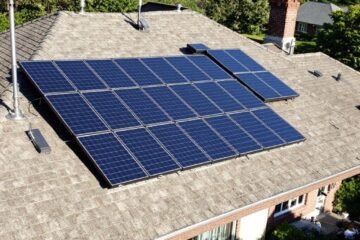What technologies beyond batteries energy storage are needed?
The problem of energy storage refers to the difficulty of storing excess energy generated by sources such as solar panels or wind turbines so that it can be used later when the power is required. This is significant because these energy sources are frequently intermittent and only produce energy continuously throughout the day.
Traditional battery technologies for energy storage, such as lead-acid or lithium-ion batteries, have been widely used. These technologies, however, have several limitations that make them unsuitable for specific applications. Traditional batteries, for example, may be unable to store large amounts of energy for extended periods, or they may be unable to discharge their stored energy quickly enough to meet demand. Furthermore, traditional batteries may require frequent maintenance and have a shorter lifespan than other energy storage technologies.
As a result, more efficient and effective beyond batteries alternatives energy storage solutions are required to overcome these limitations and meet the increasing demand for reliable energy storage. This is where technologies beyond batteries energy storage come into play, as they have the potential to provide more efficient, cost-effective, and scalable energy storage options.
Beyond batteries alternatives energy storage technologies are systems that can store excess energy for later use but do not rely on traditional battery technologies. Some examples of beyond batteries alternatives energy storage technologies include:
- Pumped hydroelectric storage: This technology uses excess electricity to pump water from a lower reservoir to an upper reservoir. When the stored energy is needed, the water is released back to the lower reservoir, passing through a turbine to generate electricity.
- Compressed air energy storage: This technology uses excess electricity to compress air stored in a tank or underground cavern. When the stored energy is needed, the compressed air is released to power a turbine, generating electricity.
- Flywheel energy storage: This technology uses excess electricity to spin a heavy wheel (the flywheel) at high speeds. The kinetic energy of the spinning flywheel is stored and can be later used to generate electricity by using the flywheel to turn a generator.
- Thermal energy storage: This technology uses excess heat or cold to store energy in the form of temperature differences. For example, excess heat can be used to melt a material with a high melting point, which can then be stored until the stored energy is needed. When the stored energy is required, the material can solidify, releasing the stored heat and generating electricity through a thermodynamic process.
These are just a few examples of the many beyond batteries alternatives energy storage technologies being developed and implemented worldwide. Each of these technologies has its advantages and disadvantages. Depending on local climate, available resources, and specific energy storage needs, they may be more or less suitable for particular applications.
Each alternative energy storage technology mentioned has its unique set of advantages and disadvantages compared to traditional batteries. Here are some of the main points to consider:
- Pumped hydroelectric storage: This technology has the advantage of being able to store large amounts of energy for long periods, and it can also discharge the stored energy quickly when needed. However, it requires the construction of a large-scale hydroelectric plant, which can be expensive and may only be feasible in some locations. Additionally, it relies on water availability and suitable reservoirs, which may be limiting factors in some areas.
- Compressed air energy storage: This technology has the advantage of being relatively simple and cheap to build, and it can also store large amounts of energy for long periods. However, it is less efficient than other technologies, as some stored energy is lost as heat during the compression and expansion process. Additionally, it requires the construction of large underground caverns or tanks to hold the compressed air, which may only be feasible in some locations.
- Flywheel energy storage: This technology has the advantage of being relatively simple and compact, and it can also discharge stored energy quickly when needed. However, it can hold less energy than other technologies, and it may have a relatively short lifespan due to the high-speed rotation of the flywheel, which can cause wear and tear.
- Thermal energy storage: This technology has the advantage of storing large amounts of energy for long periods, and it can also be relatively cheap to build. However, it is less efficient than other technologies, as some stored energy is lost as heat during the charging and discharging process. Additionally, it may be less suitable for certain climates, as it relies on temperature differences to store and release energy.
Overall, each technology has its strengths and limitations, and the most suitable technology for a given application will depend on the specific energy storage needs and available resources.
Many examples of alternative energy storage technologies are being implemented in real-world projects worldwide. Here are a few examples:
- Pumped hydroelectric storage: The Dinorwig Pumped Storage Hydroelectric Scheme in Wales has been a large-scale pumped hydroelectric storage project since the 1980s. The project uses excess electricity to pump water from a lower reservoir to an upper reservoir. The stored energy is released by allowing the water to flow back down to the lower reservoir through turbines, generating electricity as it goes.
- Compressed air energy storage: The Huntorf Compressed Air Energy Storage (CAES) plant in Germany is a large-scale compressed air energy storage project that has been in operation since 1978. The plant uses excess electricity to compress air stored in underground caverns. When the stored energy is needed, the compressed air is released to power a turbine, generating electricity.
- Flywheel energy storage: The Beacon Flywheel Energy Storage (BFES) project in California is an example of a flywheel energy storage system used in conjunction with a wind farm. The project uses excess wind energy to spin a flywheel, which stores the kinetic energy. When the stored energy is needed, the flywheel turns a generator, producing electricity.
- Thermal energy storage: The Solana Generating Station in Arizona is a solar thermal power plant that uses thermal energy storage to generate electricity around the clock. The plant uses mirrors to focus sunlight onto a central tower, where the absorbed heat melts a material with a high melting point. The stored energy is later released by allowing the material to solidify, generating electricity through a thermodynamic process.
These are a few examples of real-world projects using alternative energy storage technologies. As these technologies continue to be developed and refined, we can expect to see more and more of these projects implemented in the future.
There are many ongoing efforts to further develop and improve beyond batteries alternatives energy storage technologies to make them more efficient, cost-effective, and scalable. As these efforts bear fruit, we expect these technologies to play an increasing role in the energy storage landscape.
Increasing the energy density of these technologies, which refers to the amount of energy stored in a given volume or weight, is one area of focus for future developments. Researchers, for example, are working to improve the efficiency of compressed air energy storage systems to reduce the heat lost during the compression and expansion process. Similarly, researchers are investigating using new materials in flywheels and thermal energy storage systems to increase energy density while decreasing weight.
Another area of focus is reducing the cost of these technologies to make them more competitive with traditional batteries. For example, researchers are working on ways to use cheaper and more readily available materials in the construction of pumped hydroelectric storage plants and methods to reduce the overall cost of these systems through advanced manufacturing techniques.
Researchers are considering using these technologies in a broader range of applications, such as integrating them with renewable energy sources like solar panels and wind turbines. For example, thermal energy storage systems can store excess heat generated by solar panels, which can then generate electricity when the sun is not shining.
Beyond batteries energy storage technologies have the potential to help address the need for more efficient and effective energy storage solutions. These technologies offer a range of benefits over traditional battery systems, including the ability to store large amounts of energy for long periods, the ability to discharge stored energy quickly when needed, and the potential for lower costs and longer lifespans.
Ongoing research and development efforts are focused on improving energy density, reducing cost, and expanding the range of applications for these technologies. As these efforts bear fruit, it is likely that we will see beyond batteries energy storage systems play an increasingly important role in the energy storage landscape.
In conclusion, beyond batteries energy storage technologies offer a promising alternative to traditional battery systems and have the potential to help address the growing need for more efficient and effective energy storage solutions. Furthermore, as these technologies continue to be developed and refined, they may play a vital role in helping to meet the energy needs of the future.


